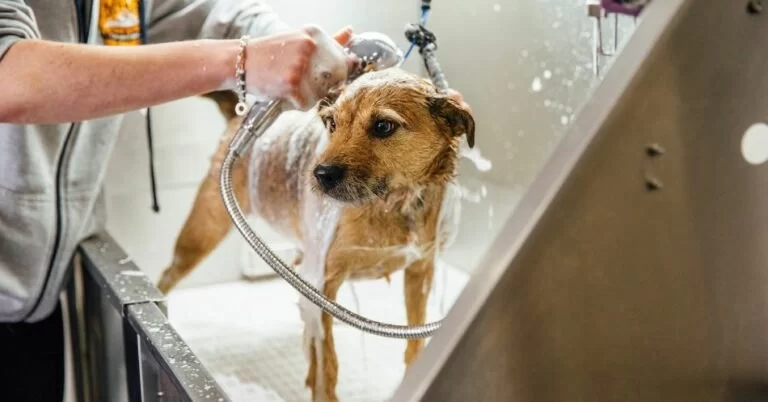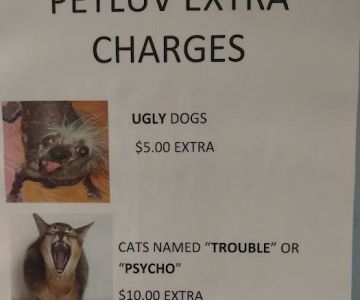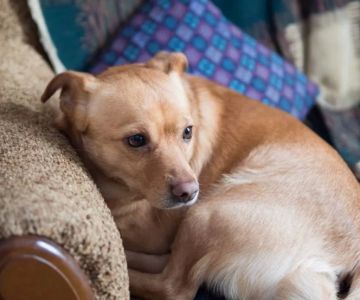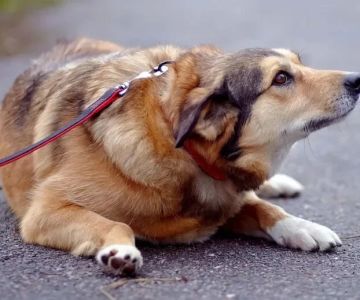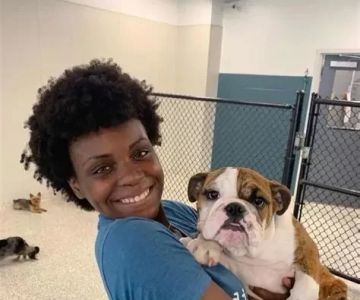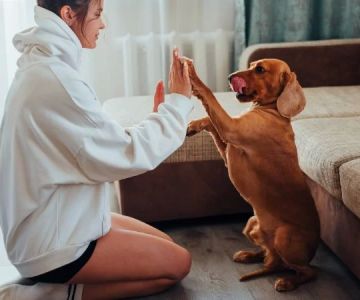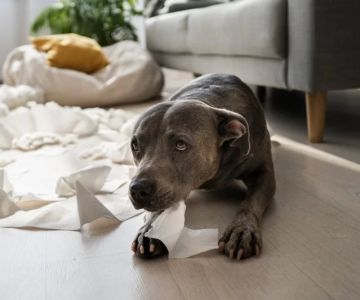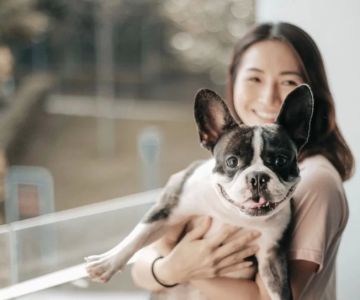1. Understanding Why Dogs Feel Anxious at the Groomer
For many pet owners, grooming day can be one of the most stressful experiences for their dogs. Loud dryers, buzzing clippers, unfamiliar smells, and even being handled by strangers can all trigger anxiety. To truly know how to help a dog with anxiety at the groomer, we first need to understand what causes that fear.
Dogs, much like humans, associate certain environments with emotions. If a dog had a bad grooming experience in the past — perhaps a rough trim, loud noises, or being restrained — that memory can lead to future anxiety. Additionally, some breeds are naturally more sensitive to stimuli, and puppies not exposed to grooming early in life may find the process overwhelming later on.
2. Recognizing the Signs of Grooming Anxiety
2.1 Physical and Behavioral Indicators
An anxious dog might shake, pant excessively, whine, or even try to escape when approaching the grooming salon. Some dogs become withdrawn or exhibit aggression — not out of meanness, but out of fear. Understanding these cues helps you intervene before the situation escalates.
2.2 Pre-Grooming Tension
Many owners notice anxiety signs long before the actual appointment. Dogs might hide when you grab the leash, refuse to enter the car, or start drooling as you drive toward the groomer. These behaviors indicate that your dog has associated the entire grooming routine with stress — and that’s where preparation comes in.
3. How to Prepare Your Dog Before a Grooming Appointment
3.1 Desensitize Your Dog Gradually
Desensitization is key in helping anxious dogs. Start by mimicking grooming activities at home — let your dog hear the sound of a hairdryer from a distance, gently touch their paws, or brush their coat for short periods. Reward them with treats and praise after each calm interaction. Over time, these positive associations help reduce fear.
3.2 Exercise Before the Appointment
Taking your dog for a brisk walk or play session before grooming helps release built-up energy and tension. A tired dog is generally calmer and more cooperative, making the grooming process easier for both your dog and the groomer.
3.3 Bring Familiar Comfort Items
Dogs often find comfort in familiarity. Bringing their favorite blanket, toy, or even a piece of clothing that smells like you can help reduce anxiety. Some groomers will allow you to stay nearby during the initial stages to help your dog feel secure.
4. Creating a Positive Grooming Environment
4.1 Choose the Right Groomer
Not all groomers are the same. When dealing with an anxious pet, choose one who specializes in gentle handling or fear-free grooming techniques. These professionals are trained to recognize canine body language and adjust their approach accordingly.
4.2 Gradual Introduction to Grooming Equipment
Before starting, a good groomer will let your dog sniff and explore grooming tools. This small gesture can make a big difference. When your dog realizes that the clippers or blow dryer won’t hurt, they’re more likely to relax.
4.3 Minimize Sensory Stressors
Calming music, natural lighting, and aromatherapy can all create a more relaxing atmosphere. Some salons use diffused lavender or chamomile oils to help pets feel calmer. For dogs highly sensitive to sound, a quiet grooming space or noise-canceling hood can make the experience more bearable.
5. Professional Techniques to Calm an Anxious Dog
5.1 Slow and Steady Handling
A skilled groomer will work at your dog’s pace — taking breaks when necessary and avoiding sudden movements. The goal is to build trust, not to rush the session. This approach can turn an anxious dog into one that gradually enjoys grooming sessions over time.
5.2 Using Positive Reinforcement
Reward-based grooming is one of the most effective methods for reducing stress. Offering treats, verbal praise, and gentle petting during breaks helps your dog associate grooming with positive outcomes. Over time, the fear turns into anticipation — especially when treats are involved!
5.3 Vet-Approved Calming Aids
For extremely anxious dogs, consult a veterinarian about safe calming options. Some may benefit from natural supplements like L-theanine or pheromone sprays, while others may require mild anti-anxiety medication. At Hidden Brook Veterinary, we always tailor anxiety solutions to the dog’s specific temperament and health history.
6. Real-Life Example: Daisy’s Grooming Transformation
Daisy, a four-year-old Goldendoodle, used to shake uncontrollably whenever she approached the groomer’s door. Her owner, Sarah, described grooming days as “emotionally exhausting.” With guidance from a professional trainer and her veterinarian, Sarah began a desensitization plan — introducing Daisy to grooming tools at home, rewarding calm behavior, and scheduling shorter, more frequent appointments.
After six weeks of gradual exposure, Daisy’s transformation was incredible. She walked into the grooming salon wagging her tail instead of trembling. Her groomer noted how calm she remained even during drying — something unimaginable a few months earlier. Daisy’s story is a testament to the power of patience and positive reinforcement.
7. Helping Your Dog After the Grooming Session
7.1 Reward Calm Behavior
Once home, reward your dog with affection, a treat, or playtime to reinforce the idea that grooming leads to good experiences. Avoid overexciting them immediately afterward — let them relax first before resuming normal activities.
7.2 Observe for Signs of Post-Grooming Stress
Some dogs may still feel nervous or tired after grooming. It’s normal if they seem quieter than usual for a few hours. However, if your dog hides, refuses food, or appears traumatized, contact your veterinarian for advice. Addressing anxiety early prevents it from worsening over time.
8. The Role of Hidden Brook Veterinary in Managing Grooming Anxiety
At Hidden Brook Veterinary, we understand how emotional grooming can be — both for dogs and their owners. Our team offers behavioral consultations, anxiety management plans, and safe calming treatments designed to make grooming a positive part of your pet’s routine. Whether your dog struggles with mild nervousness or severe fear, we provide compassionate guidance that helps you both enjoy a stress-free grooming experience.
Learning how to help a dog with anxiety at the groomer takes time, patience, and understanding — but the payoff is worth it. With consistent care, the right environment, and professional support, even the most nervous pups can learn that grooming doesn’t have to be scary. And when in doubt, the experts at Hidden Brook Veterinary are always here to help you make your dog’s wellness journey a calm and joyful one.

